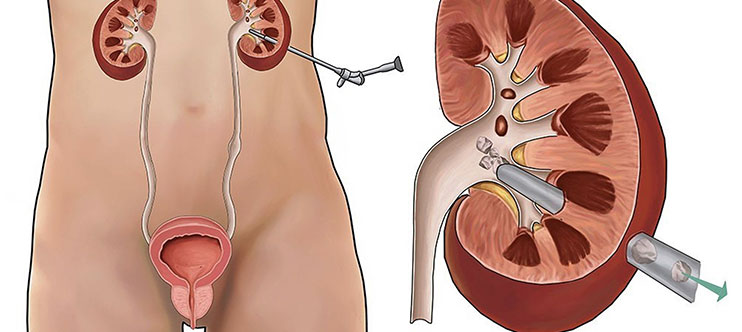

Percutaneous Nephrolithotomy (PCNL) is a minimally invasive surgical procedure used to remove large, complex, or stubborn kidney stones that cannot be effectively treated using less invasive methods like ESWL (Extracorporeal Shock Wave Lithotripsy) or URS (Ureteroscopy). During the procedure, a small incision is made in the patient's back to access the kidney directly, allowing for the fragmentation and extraction of stones using specialized instruments.
Indications for PCNL
- Large Kidney Stones: Stones larger than 2 cm that are difficult to pass naturally.
- Staghorn Calculi: Complex, branched stones that fill the renal pelvis and calyces.
- Failed ESWL or URS: Stones that did not fragment or pass after previous treatments.
- Obstructing Kidney Stones: Stones causing blockage and hydronephrosis.
How is PCNL Performed?
- Preoperative Preparation: Imaging (CT or X-ray) to evaluate stone size, location, and anatomy.
- Anesthesia: Performed under general anesthesia.
- Stone Fragmentation and Removal
- Drainage and Stent Placement
Complications and Risks
- Infection or fever
- Injury to surrounding organs (rare)
- Residual stone fragments requiring further treatment
Benefits of PCNL
- Effective for Large and Complex Stones
- Minimally Invasive with Faster Recovery
- Higher Success Rate Compared to Other Modalities
- Reduced Risk of Recurrence for Large Stones
PCNL is a highly effective and safe procedure for managing large or complex kidney stones, especially those that are not responsive to other treatments. It offers a minimally invasive approach with a high success rate, faster recovery, and fewer complications, making it the preferred choice for treating complex renal stones.